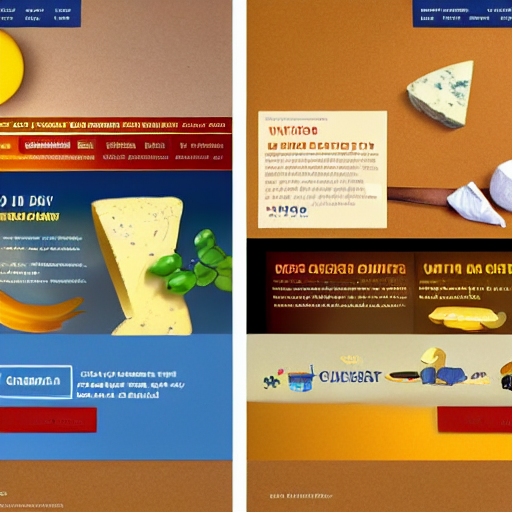Introduction
A/B testing, also known as split testing, compares two versions of a web page or app to see which one performs better. A/B testing can test different designs, headlines, calls to action, and other elements of a website or app. By running a simple A/B test, you can quickly determine which version of a web page or app is more effective at converting visitors into customers. When I start a consulting engagement with new clients focused on testing and optimization, I am usually asked how to get started. I always suggest identifying tests that are easy to set up technically and have the potential to produce a solid result to prove that A/B testing and experimentation are worth the investment. Below are three of my favorite tests to run with new clients who are brand new to testing. The examples below are generated from a fake website that specializes in imported cheese.
1. Test different versions of your home page
One easy way to improve conversion rates on your website is to test different versions of your home page. Home pages are often the first point of contact between a visitor and a website, so it's essential to make sure that they are effective at converting visitors into customers. A/B testing allows you to test different versions of your home page to see which one is more effective at converting visitors.

Homepage testing is also beneficial because it is usually one of if not the highest traffic pages of most websites. This means that a test can reach statistical significance quickly, which is how you know a test's results will be repeatable if the same test is run again on the same page. If you are unsure exactly how much traffic you need or how long a test should run to get to statistical significance, Adobe Target hosts a sample size calculator that is very helpful with the pre-planning stages of a test.
2. Test different calls to action
Another easy way to improve conversion rates on your website is to test different calls to action. Calls to action are the buttons or links that you use to encourage visitors to take a desired action, such as subscribing to a newsletter or making a purchase. A/B testing allows you to test different calls to action to see which one is more effective at converting visitors into customers.


Once you know which version of a call to action (CTA) performs better, you can use that version on other website pages to improve conversion rates further. Call-to-action testing is also a great way to test different messages to see which resonates more with your target audience.
3. Test global site elements
In addition to testing individual pages, you can also test global site elements. Global site elements are present on every page of your website, such as a header or a footer. A/B testing global site elements can be a bit more technical to set up, but it can be a great way to improve the overall experience of your website.


Some ways to test global elements are to test different header and footer designs, rearrange the navigation elements, or even add new elements. Testing global elements is also a great way to get to statistical significance quickly, as you are not relying on the traffic to one page of your website but all traffic to your site. There is a lot of flexibility with global site element testing, so it's a great way to get creative and see what works best for your website. You might be surprised at how a small change to a global element can have a significant impact on conversion rates.
Conclusion
When it comes to A/B testing, there are a number of easy tests that you can run to improve your website's conversion rate. Test different versions of your homepage, test different calls to action and test global site elements to see which version performs the best. By running these simple tests, you can help ensure that your customers have a positive experience on your website and are more likely to convert into paying customers. It is also important to define clear KPIs that each test will be measured. This could be something like an increase in conversion rate or a decrease in bounce rate. Without a clear KPI, it can be difficult to determine whether a test was successful. When you have a clear KPI defined, it will be much easier to showcase your testing program and help your executives see the value in A/B testing.
What other easy a/b tests have you run that produced great results? Let me know in the comments below!
Cover Photo by Jurica Koletić on Unsplash


